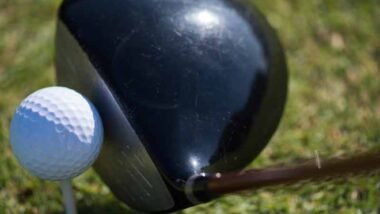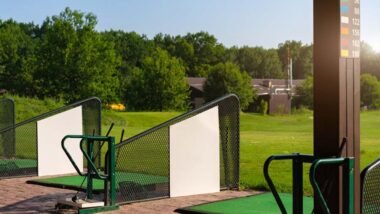Isn’t it frustrating when your golf ball feels like it has a mind of its own, slicing off in a direction you never intended? You’re not alone if you find yourself battling this common issue. Many golfers, whether beginners or seasoned players, have faced the dreaded golf slice. The good news is that understanding the cause and implementing some effective strategies can help you manage and potentially eliminate this challenge.
Understanding the Golf Slice
A golf slice occurs when the ball curves dramatically to the right (for right-handed players) during its flight. It’s often a source of embarrassment on the course and can lead to lost strokes. Understanding the mechanics behind a slice is crucial for making the necessary adjustments.
The Physics Behind a Slice
When you strike the ball, the angle of the clubface in relation to the swing path greatly influences its trajectory. If the clubface is open at impact, it causes sidespin, leading to a slice. Even minor misalignments can result in significant shifts in the ball’s direction.
The following table breaks down the key contributors to a slice:
| Factor | Description |
|---|---|
| Clubface Angle | An open clubface at impact leads to a slice. |
| Swing Path | An outside-to-inside swing path causes the ball to spin off to the right. |
| Grip Position | An improper grip can lead to the clubface being open during the swing. |
| Body Alignment | Poor alignment can create an outside-in swing path, exacerbating the slice. |
Common Causes of a Golf Slice
Understanding why your golf ball slices can provide you insights into correcting your swing. Here are some common causes that might be contributing to the problem:
1. Open Clubface at Impact
As mentioned earlier, an open clubface is one of the primary culprits of a slice. If your clubface is pointed right at the moment of impact, it will send the ball in that direction.
2. Improper Grip
The way you hold the club can impact your swing’s effectiveness. A weak grip tends to promote an open clubface, thereby leading to a slice.
3. Swing Path Issues
Many golfers unknowingly swing in an outside-to-inside path. This means your club is approaching the ball from outside your intended line, contributing to harsh spin and an undesirable slice.
4. Body Alignment
Your body’s alignment can play a crucial role in your swing mechanics. If your body or feet are misaligned, it can affect your swing path and clubface angle at impact.
Quick Fixes for a Golf Slice
While there may not be a magical cure, there are several strategies you can implement quickly to correct a slice. Each golfer is unique, so it may take some experimentation to find what works best for you.
Adjust Your Grip
One of the quickest fixes for a slice is to change how you grip the club.
How to Adjust Your Grip
- Check Your Grip: Ensure that you’re using a neutral or strong grip. With a strong grip, rotate your hands slightly to the right on the club (for right-handed players).
- Grip Pressure: Maintain consistent pressure. Gripping too tightly can restrict the natural motion of your swing.
Table: Grip Types
| Grip Type | Characteristics |
|---|---|
| Neutral Grip | Hands are positioned so that the thumb is directly on top. |
| Strong Grip | Hands are rotated to the right, creating a closed face. |
| Weak Grip | Hands are rotated to the left, often leading to an open face. |
Work on Your Swing Path
Adjusting your swing path may also help in resolving the slice.
Techniques for Correcting Swing Path
- Drill with Alignment Sticks: Use alignment sticks in the ground to ensure your swing path is straight.
- Feel the Inside Path: Focus on swinging from the inside out. You can practice this with a towel placed outside the ball.
Focus on Clubface Control
Making sure your clubface is square at impact is essential.
Drills for Clubface Control
- Impact Position Drill: Practice hitting balls while focusing on the clubface being square at impact.
- Mirror Work: Use a mirror to watch your position just before impact, ensuring that your face isn’t open.
Improve Your Alignment
Proper alignment can make a world of difference in your golf swing.
Steps to Achieve Proper Alignment
- Pick a Target Line: Identify a target and align your feet parallel to that line.
- Check Your Shoulders: Ensure that your shoulders are aligned with your target as well.
Experiment with Equipment
Sometimes, your equipment may contribute to your slice.
Choosing the Right Clubs
- Loft and Lie: Ensure your clubs are correctly fitted for your height and posture.
- Driver Consideration: Opt for a driver with a larger clubface, which can minimize the effects of a slice.
Practice Makes Perfect
Implementing quick fixes is just the first step. Regular practice can reinforce the changes you’re making and help solidify good habits. Here are some tips for effective practice.
Focus on Repetition
Repetition is vital when trying to connect with a new swing.
- Set aside practice time dedicated solely to working on your grip and swing path.
- Focus on making smooth, controlled swings rather than trying to hit the ball as far as possible.
Use Video Analysis
Recording your swings can be incredibly beneficial.
- Review videos to detect flaws in your grip or swing path.
- Compare your swings over time to monitor improvements.
Seek Professional Instruction
If the slice persists, consider seeking help from a golf professional.
- A coach can provide personalized feedback and tips tailored to your unique swing.
- Investing in lessons can often lead to substantial improvements.
Strengthening Your Physical Game
Improving your physical condition can also have a positive impact on your swing.
Flexibility Training
Being flexible allows for a more complete swing, which can help maintain a proper path and face angle.
Exercises for Flexibility
- Torso Rotations: Strengthen your core while increasing rotational flexibility.
- Hamstring Stretches: Ensure a good range of motion in your lower body.
Strength Training
Building strength, particularly in your core and legs, can provide stability during your swing.
Core Strength Exercises
| Exercise | Description |
|---|---|
| Planks | Maintain a straight line from head to heels. |
| Russian Twists | Rotate your torso while maintaining stable lower body. |
| Medicine Ball Slams | Engage your entire body in explosive movement. |
Mental Approach
Don’t underestimate the power of a positive mindset. Maintaining confidence and focus can be just as important as physical adjustments.
Visualization Techniques
Before taking a shot, visualize the trajectory you want your ball to take.
- Picture hitting the ball straight and achieving your desired distance.
- This mental imagery can help you commit to the shot and relax your body.
Stress Management
Managing stress on the course can also help improve your performance.
- Practice breathing exercises to stay calm and focused.
- Remember, every golfer struggles at times; it’s all part of the game!
Conclusion
Dealing with a golf slice can be a hassle, but with the right adjustments and practice, you can take control of your game. By understanding the causes of a slice, making quick fixes, and committing to consistent practice, you’re well on your way to improving your swing and lowering your scores.
Keep in mind that every golfer is unique, so take the time to find what works best for you. Whether you choose to focus on grip adjustments, swing path corrections, or equipment tweaks, stay patient and persistent. Improvement takes time, but with effort and determination, you can conquer the slice and elevate your golf game. Enjoy every moment on the course, and may your swings be straighter and your scores lower!








